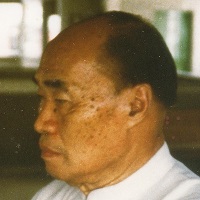 (1910–1992)
黄兴贤大师(Huang Xingxian, Huang Sheng-Shyan)黄兴贤大师于1910年出生于中国福建省鼓山镇翔宇村。
(1910–1992)
黄兴贤大师(Huang Xingxian, Huang Sheng-Shyan)黄兴贤大师于1910年出生于中国福建省鼓山镇翔宇村。
从14岁起,他就在福建白鹤拳训练, 罗汉拳和道家内功,最初在潘屿八大师处,后来在他最著名的弟子谢宗祥大师处 (1852–1930)。
后来,他还在潘桩年大师手下受训,潘桩年大师在中医和文学经典方面对黄氏进行教育。
随后,黄晓明在上海开设了一所学校,与他的朋友一起训练 Chung Yu-Jen (太极), Chiang Hai-Ching (形意) 和 Yang Chih-Ching (八卦)。 他还跟随万赖声学习,万赖声是1938年中国武术冠军,以自然门闻名。
白鶴拳
白鶴拳
1947年,他移居台湾,开始跟随郑曼青大师学习太极,郑曼青大师是杨澄甫大师的嫡传弟子。很快,黄晓明就被录取为内门弟子,在后来的日子里,他被认为是郑曼青最有成就的弟子。
从1958年起,黄氏在新加坡和马来西亚生活和执教,在那里他建立了40所学校,教了一万人。在1992年12月去世前不久,他获得了新西兰的永久居留权。
从1958年起,黄氏在新加坡和马来西亚生活和执教,在那里他建立了40所学校,教了一万人。在1992年12月去世前不久,他获得了新西兰的永久居留权。
在他生命的最后5年里,他在自己身边聚集了40名他内部学校的积极入门弟子,并试图向他们传授他最后的教义。他说,在选择这些人时,他主要关注的是他们内心动机的真诚度。
他解释说,他不希望有一个人声称是他的继承人,但他希望这40人(其中只有少数人今天继续教书)的综合知识将包含他的方法的精华,这些人将代表他未来的教学。
他解释说,他不希望有一个人声称是他的继承人,但他希望这40人(其中只有少数人今天继续教书)的综合知识将包含他的方法的精华,这些人将代表他未来的教学。
Q&A with Huang Xingxian
Are there different schools or sects of Taiji?
Taiji embodies a comprehensive set of knowledge, developed and handed down by our learned predecessors with mystifying principles and profound philosophical learnings. ...Our predecessors developed the art for improving human health, warding off sickness, slowing down the ageing process, achieving longevity and defending oneself...
Once there is internal and external synchronisation, then the question of slow and fast in practice is unimportant. At this stage, one gets the feeling that the upper portion of the body is like the drifting of clouds and the lower portion is like the flowing of water.
Q&A 中国 EN FR IT DE